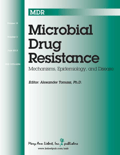
Microbial Drug Resistance
Scope & Guideline
Empowering Research to Combat Drug Resistance
Introduction
Aims and Scopes
- Mechanisms of Drug Resistance:
Research articles explore the genetic, biochemical, and physiological mechanisms by which bacteria and fungi develop resistance to antimicrobial agents, including beta-lactams, macrolides, and newer antibiotics. - Clinical Implications of Resistance:
The journal emphasizes studies that investigate the clinical consequences of antimicrobial resistance, including treatment failures, infection outcomes, and the implications for public health. - Surveillance and Epidemiology:
Publications include epidemiological studies that track the prevalence and distribution of resistance genes in various environments, including hospitals, communities, and animal populations. - Novel Therapeutic Approaches:
Research on new antimicrobial agents, combination therapies, and alternative treatment strategies is a key focus, showcasing efforts to combat resistance in clinical settings. - Environmental and One Health Perspectives:
The journal also covers studies that assess the environmental impact of resistant pathogens and the interconnectedness of human, animal, and environmental health in the context of antimicrobial resistance.
Trending and Emerging
- Characterization of Resistance Genes and Mobile Elements:
There is a growing emphasis on the characterization of resistance genes, particularly those located on mobile genetic elements such as plasmids, which facilitate the spread of resistance across different bacterial species. - Impact of COVID-19 on Resistance Trends:
Research examining how the COVID-19 pandemic has influenced antimicrobial resistance patterns, treatment practices, and infection control measures has gained significant attention. - Use of Advanced Genomic Techniques:
The application of whole-genome sequencing and other genomic techniques to analyze resistance mechanisms and track outbreaks is becoming increasingly prevalent in published studies. - Environmental Resistance Dynamics:
Emerging research focuses on the dynamics of antimicrobial resistance in environmental contexts, including wastewater, agricultural settings, and wildlife, highlighting the importance of a One Health approach. - Innovative Therapeutic Strategies:
There is a rising interest in exploring novel therapeutic strategies, including the use of bacteriophages, antimicrobial peptides, and combination therapies, to overcome drug resistance.
Declining or Waning
- Antibiotic Stewardship in Specific Settings:
Although antibiotic stewardship remains important, there has been a noticeable decline in studies focusing solely on stewardship practices within specific healthcare settings, as more comprehensive and integrated approaches are being adopted. - Basic Laboratory Techniques for Resistance Detection:
Research centered around traditional laboratory methods for detecting resistance, such as disk diffusion or standard broth microdilution, appears to be less frequent, as newer molecular and rapid testing methods gain traction. - Single-Pathogen Studies:
The trend has shifted towards multi-pathogen studies and broader environmental assessments, leading to a decrease in publications focusing exclusively on single-pathogen resistance profiles. - Global Surveys of Resistance Patterns:
While still relevant, the frequency of global surveys of resistance patterns has diminished, possibly due to the increasing focus on localized studies that address specific regional challenges.
Similar Journals

Microorganisms
Innovating discoveries in microbiology and virology.Microorganisms is a leading open-access journal published by MDPI based in Switzerland, catering specifically to the rapidly evolving fields of microbiology and virology. Since its inception in 2013, the journal aims to foster the dissemination of high-quality research through its comprehensive and interdisciplinary platform, with a particular focus on both fundamental and applied microbiological sciences. Contributing to its esteemed reputation, Microorganisms holds a commendable Q2 ranking in the categories of Microbiology and Virology, as well as in Medical Microbiology, highlighting its significance in the academic community. With a consistent impact, evidenced by its rankings in Scopus—such as rank #25 in Virology and #56 in Microbiology—the journal serves as an invaluable resource for researchers, professionals, and students looking to stay at the forefront of microbiological research. As an open-access journal, Microorganisms ensures that vital research findings are readily available to a global audience, promoting collaboration and innovation in the study of microbial life and its implications for health and disease.
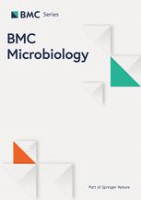
BMC MICROBIOLOGY
Advancing microbiological research for a healthier world.BMC Microbiology is a leading open access journal published by BMC, dedicated to advancing the field of microbiology since its inception in 2001. With an ISSN of 1471-2180, this journal provides a vital platform for researchers, professionals, and students to share and access high-quality research and innovation in both general and medical microbiology. Based in the United Kingdom, BMC Microbiology holds a commendable Q2 ranking in both various microbiological categories according to the 2023 Scopus rankings, indicating its strong influence in the microbiological community, with a rank of #47 out of 140 in Medical Microbiology and #62 out of 182 in general Microbiology. The journal's commitment to open access ensures that groundbreaking research is freely available to facilitate collaboration and knowledge sharing among the global community of microbiologists. With a focus on publishing original research, reviews, and case studies, BMC Microbiology plays a critical role in disseminating information that can impact health and environmental conditions around the world.
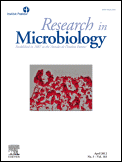
RESEARCH IN MICROBIOLOGY
Advancing the frontiers of microbiological research.Research in Microbiology, published by Elsevier, is a prominent academic journal devoted to advancing the field of microbiology, encompassing a diverse array of topics including immunology, molecular biology, and biochemistry. Established in 1987, the journal has expanded its focus over the years, with a commendable impact factor reflecting its relevance and influence in the scientific community. Although it does not currently offer open access options, Research in Microbiology remains a crucial resource for researchers and professionals seeking to stay abreast of the latest findings and methodologies. The journal holds a respectable Q2 ranking in Medicine (miscellaneous) and a Q3 ranking in both Microbiology and Molecular Biology for 2023, highlighting its position within the scholarly landscape. With its base in France and accessible to a global audience, Research in Microbiology continues to foster scholarly exchange, making it an essential platform for the dissemination of impactful microbiological research.

Lancet Microbe
Exploring Innovations in Infectious DiseasesThe Lancet Microbe is a leading peer-reviewed journal published by ELSEVIER, focused on advancing research in the fields of infectious diseases, microbiology, and virology. Since its inception in 2020, this open-access journal has rapidly achieved a prestigious reputation, evidenced by its impressive rankings in the Scopus Ranks, where it holds positions within the top 10 in multiple categories and boasts high percentiles, reflecting the impact and relevance of its published works. With a quarterly publication schedule, the Lancet Microbe aims to disseminate critical findings and foster innovation within the scientific community, providing a platform for researchers and professionals to share their significant contributions. The journal is committed to facilitating knowledge exchange and accessibility, making it an essential resource for academicians and practitioners dedicated to addressing global health challenges.

mSphere
Empowering breakthroughs in the world of microorganisms.mSphere is a leading open-access journal published by the American Society for Microbiology, dedicated to the dynamic fields of Microbiology and Molecular Biology. Since its inception in 2016, mSphere has rapidly established itself as a reputable source of scholarly research, achieving notable impact factors and excellence within the academic community. The journal ranks in the top quartile (Q1) amongst its peers in Microbiology, and Q2 in the field of Molecular Biology, demonstrating its significance and relevance through Scopus rankings—specifically, it holds the #42 spot out of 182 in the Microbiology category and #108 out of 410 in Molecular Biology. With an editorial commitment to advancing the understanding of microbial and molecular sciences, mSphere provides an accessible platform for researchers, professionals, and students alike to disseminate groundbreaking findings. The journal promotes rigorous peer-review and invites innovative contributions aimed at enhancing microbial research mobility and molecular exploration. Accessible openly since 2016, mSphere continues to thrive as an influential publication driving scientific dialogue and discovery in the microbiological sciences.
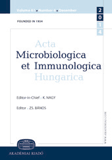
ACTA MICROBIOLOGICA ET IMMUNOLOGICA HUNGARICA
Connecting researchers to the pulse of immunology.ACTA MICROBIOLOGICA ET IMMUNOLOGICA HUNGARICA is a distinguished academic journal published by AKADEMIAI KIADO ZRT, focusing on significant advancements in the fields of microbiology, immunology, and infectious diseases. Established in 1994, this journal serves as a vital platform for researchers, professionals, and students keen on exploring the complexities of microbial interactions and immune responses. With a current Impact Factor reflecting its rank within the Q3 categories for Immunology, Microbiology, and Infectious Diseases, it retains a critical position in disseminating innovative research. Although not open access, the journal provides extensive insights disseminated through various academic databases, ensuring a broad reach within the scholarly community. Its convergence over three decades indicates a robust commitment to excellence in scientific inquiry and knowledge sharing. As it moves towards the future, ACTA MICROBIOLOGICA ET IMMUNOLOGICA HUNGARICA continues to uphold its legacy of fostering collaborative research initiatives that contribute to the understanding and treatment of microbial diseases globally.

Advancements in Life Sciences
Connecting Researchers, Transforming DiscoveriesAdvancements in Life Sciences is a prominent open-access journal published by The Running Line since 2014, dedicated to the exploration and dissemination of research in the fields of biochemistry, genetics, molecular biology, and veterinary sciences. Based in Lahore, Pakistan, this journal serves as an important platform for researchers, professionals, and students alike, offering a wide array of articles that contribute to the advancement of knowledge in these critical areas of life sciences. With an increasing visibility reflected in its Scopus rankings—#294 in General Medicine, #106 in General Veterinary, and #159 in General Biochemistry—the journal is positioned to foster innovative research and discussions. The journal operates under an open-access model, ensuring that its valuable content is readily available to the global academic community. As it continues to evolve, Advancements in Life Sciences aspires to build a substantial impact within its respective quartiles, currently recognized as Q4 in Biochemistry, Genetics, and Molecular Biology, and Q3 in Veterinary, encouraging researchers to contribute their findings and advance the frontiers of life sciences.

Revista Espanola de Quimioterapia
Fostering Innovation in Clinical Microbiology Since 1989The Revista Espanola de Quimioterapia, published by the SOCIEDAD ESPANOLA QUIMIOTERAPIA, is a pivotal open-access journal that has been advancing the field of clinical microbiology and pharmacology since its inception in 1989. With an E-ISSN of 1988-9518, this journal caters to a diverse audience of researchers, healthcare professionals, and students, providing them with critical insights into the latest developments in medicinal chemistry and therapeutic strategies. Located in Madrid, Spain, the journal reflects the rigorous academic standards of its associated institutions, contributing significantly to the translation of research into clinical practice. Achieving a Q3 ranking in the fields of Medicine, Microbiology, and Pharmacology in 2023 attests to its growing influence and relevance in the scientific community, making it a vital resource for those engaged in the quest for innovative solutions to pressing healthcare challenges. The journal prides itself on its commitment to maintaining an open-access model since 2018, ensuring that vital research is freely accessible to foster greater knowledge sharing and collaboration within the global scientific community.
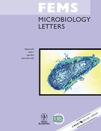
FEMS MICROBIOLOGY LETTERS
Transforming Microbiology Through Concise ScholarshipFEMS Microbiology Letters, published by Oxford University Press, is a prestigious international journal dedicated to advancing the understanding of microbiology through concise and impactful research articles. With an ISSN of 0378-1097 and E-ISSN 1574-6968, this journal encompasses a wide range of topics within the fields of genetics, microbiology, and molecular biology, achieving a notable Q3 quartile ranking in these categories as of 2023. As an essential platform for researchers, professionals, and students, FEMS Microbiology Letters invites submissions that contribute valuable insights into microbial behaviors, genetic mechanisms, and innovative methodologies pivotal in the study of microbiology. Although it is not an open-access publication, the journal's rigorous editorial standards ensure high-quality content that is relevant and significant to its audience, furthering scholarly dialogue and collaboration in the vibrant field of microbiological research.

CRITICAL REVIEWS IN MICROBIOLOGY
Advancing Knowledge in Microbial ScienceCRITICAL REVIEWS IN MICROBIOLOGY, published by Taylor & Francis Ltd, is a leading peer-reviewed journal that has made significant contributions to the field of microbiology since its inception in 1971. With a prestigious Q1 ranking in Applied Microbiology and Biotechnology, as well as in Medicine and Microbiology, this journal is recognized for its high-quality reviews that synthesize current research and emerging trends in the discipline. Researchers and professionals rely on its comprehensive evaluations and critical insights, helping to advance knowledge and application in various microbiological contexts. Although the journal does not currently operate under an open access model, it remains an invaluable resource for academics seeking to stay at the forefront of microbiological advances. With a consistent publication record, CRITICAL REVIEWS IN MICROBIOLOGY continues to support the scholarly community by addressing key issues and innovations within the field.